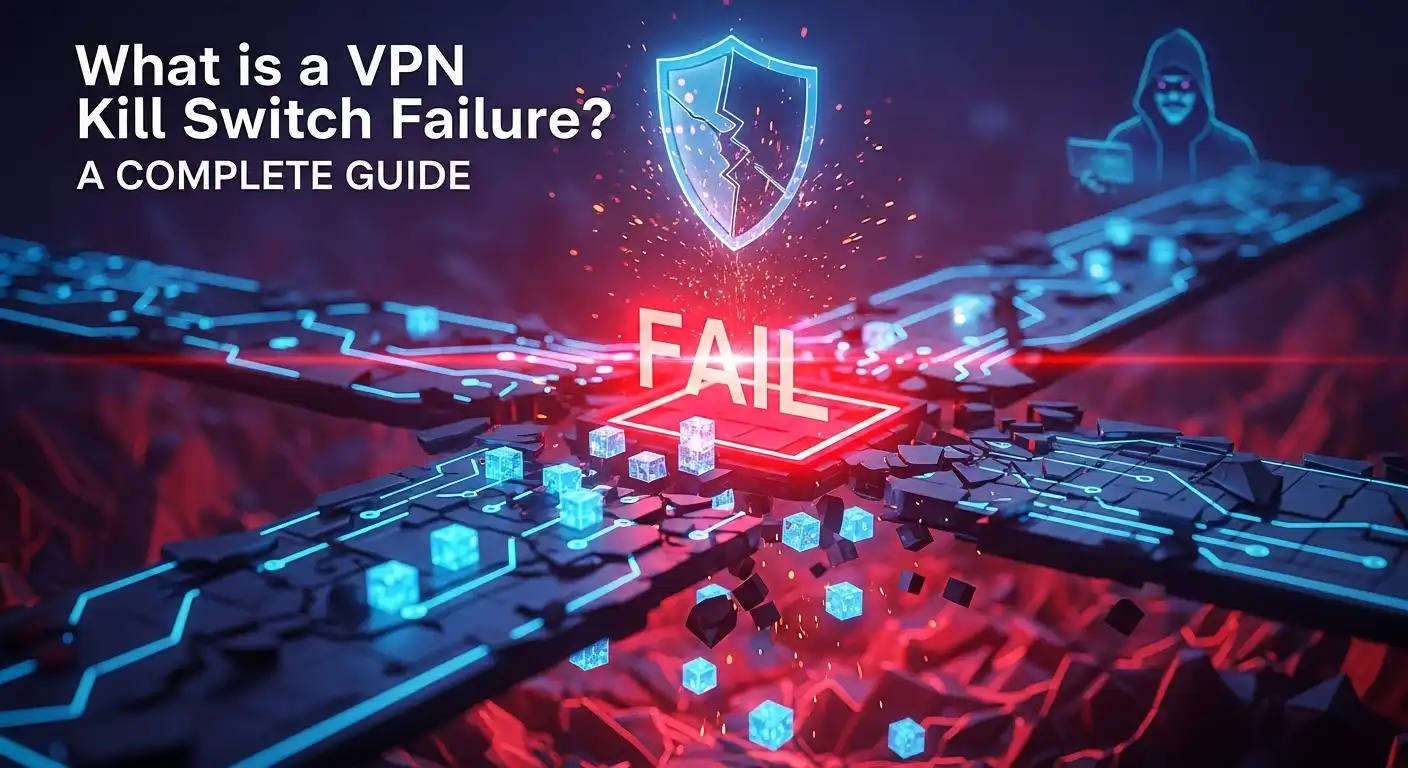In the world of online privacy, a Virtual Private Network (VPN) is your digital shield, encrypting your internet traffic and masking your true IP address. An essential component of this shield is the VPN kill switch, a feature designed as the ultimate failsafe to protect your data if the VPN connection unexpectedly drops. It’s the last line of defense between your private information and the open internet. But what happens when this safeguard itself fails? This guide explores the critical question: what is a VPN kill switch failure? It’s the moment when this digital bodyguard fails to do its one job, leaving your real IP address and unencrypted data exposed to anyone watching, from your Internet Service Provider (ISP) to malicious actors. Understanding this failure is not just a technical curiosity; it’s fundamental to ensuring your online anonymity and security remain intact. Understanding the VPN Kill Switch Foundation Before dissecting its failures, it's crucial to build a solid understanding of what a VPN kill switch is and why it's considered an indispensable feature for any serious VPN user. Think of it as an emergency brake for your internet connection. Its sole purpose is to prevent data leaks by immediately severing your device's connection to the internet the very moment your VPN connection is interrupted. This ensures that no unencrypted data packets leave your device, even for a millisecond, safeguarding your real IP address and online activities from accidental exposure. This mechanism is not just a simple on/off button; it's an active monitoring system. A reliable kill switch constantly checks the status of your VPN connection. It looks for changes in the IP address or the status of the virtual network adapter. If it detects any disruption—whether due to server issues, network instability, or software glitches—it instantly triggers a pre-defined action, which is almost always to block all incoming and outgoing internet traffic until the secure VPN tunnel is re-established or you manually disable the kill switch. The importance of this feature cannot be overstated, especially for individuals who rely on VPNs for critical privacy and security. Journalists communicating with sensitive sources, activists operating under oppressive regimes, and users torrenting files via P2P networks all depend on a continuous, unbroken chain of encryption. A momentary lapse in VPN coverage can be enough to expose their identity and location to their ISP, government agencies, or copyright trolls. Therefore, a kill switch is not a luxury; it’s a non-negotiable component of a robust digital privacy toolkit. The Two Main Types of VPN Kill Switches To fully grasp how a kill switch can fail, you must first understand that they are not all created equal. VPN providers typically implement one of two primary types of kill switches, each with its own methodology and potential points of failure. Understanding this distinction is the first step toward choosing the right VPN and configuring it for maximum security. The first and more common type is the Application-Level Kill Switch. This variant works by terminating specific, pre-selected applications if the VPN connection drops. For example, you can configure it to automatically close your web browser, torrent client, or email application, but leave other connections active. While this offers flexibility, its primary weakness is its limited scope. If you forget to add a new application to the kill switch list, its traffic will be exposed during a VPN disconnection. It relies entirely on the user's diligence to be effective. The second, more secure, and highly recommended type is the System-Level (or Firewall-Based) Kill Switch. Instead of closing apps, this type works at the network level, blocking all internet traffic from leaving your device. It essentially reconfigures your device's firewall to only allow internet access through the VPN's secure tunnel. If the tunnel collapses, the firewall rules prevent any data from finding an alternative route to the internet. This approach is far more foolproof, as it doesn't depend on which applications are running. It's a comprehensive lockdown that offers a significantly higher level of security against accidental data leaks. How a Kill Switch is Supposed to Work Let's walk through the ideal scenario of a functioning VPN kill switch. You connect to your VPN, and the client software establishes an encrypted tunnel between your device and the VPN server. At this point, the kill switch enters a "monitoring" state. It continuously "pings" or checks the integrity of this tunnel. Every data packet you send and receive is routed through this secure passage, keeping your real IP address hidden and your data unreadable to outsiders. Now, imagine your Wi-Fi signal flickers, or the VPN server you're connected to undergoes a brief moment of maintenance. The encrypted tunnel breaks. A well-functioning kill switch detects this interruption in a fraction of a second. It immediately executes its primary command: block traffic. If it's a system-level kill switch, it enforces firewall rules that drop any connection attempt from your device to the internet. If it's an application-level switch, it sends a command to terminate the specific apps you designated. Your device is now offline, but it's securely offline. No data has leaked. You might see an error message from your browser saying "You are not connected to the internet." Your VPN client will then attempt to automatically reconnect to a secure server. Once the encrypted tunnel is successfully re-established, the kill switch releases its block, and your internet access is restored, all without your true IP ever having been exposed. This seamless, automatic protection is the hallmark of a properly implemented kill switch. The Anatomy of a VPN Kill Switch Failure A VPN kill switch failure is the silent but critical breakdown of this security process. It occurs when the kill switch does not activate as intended during a VPN connection drop, allowing your device to reconnect to the internet directly through your regular, unencrypted connection provided by your ISP. This is the worst-case scenario for a privacy-conscious user, as your real IP address is instantly exposed, completely negating the primary purpose of





